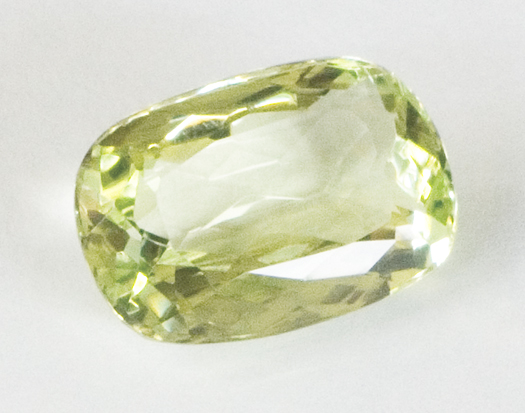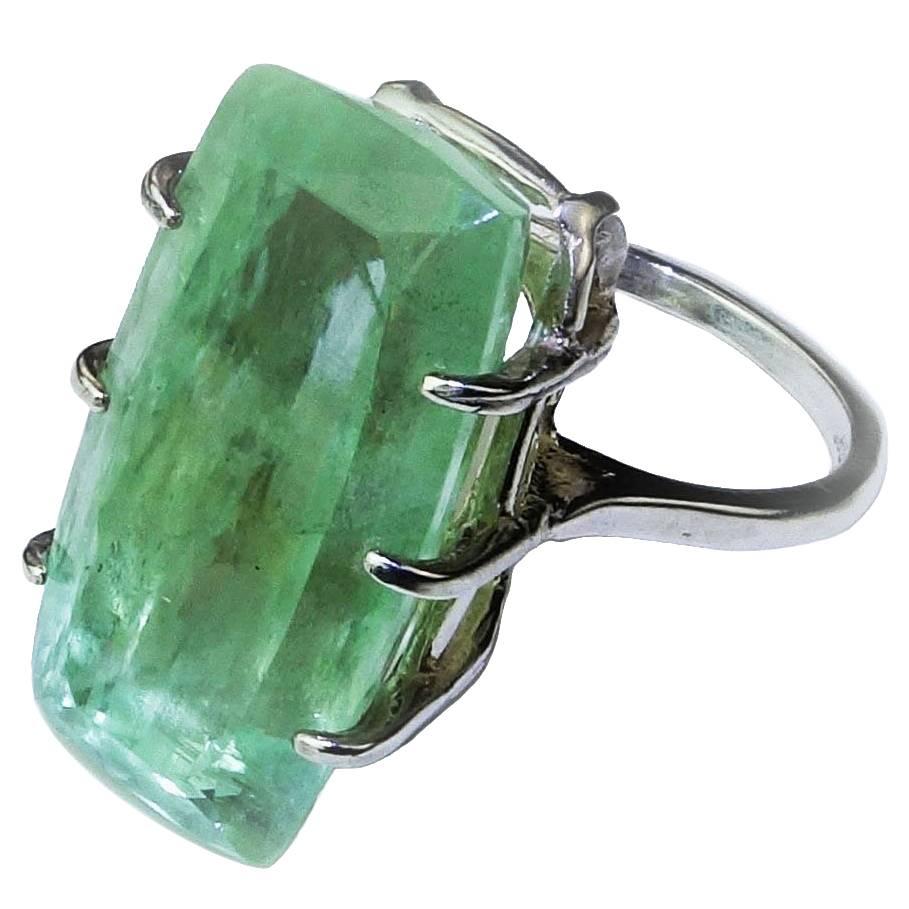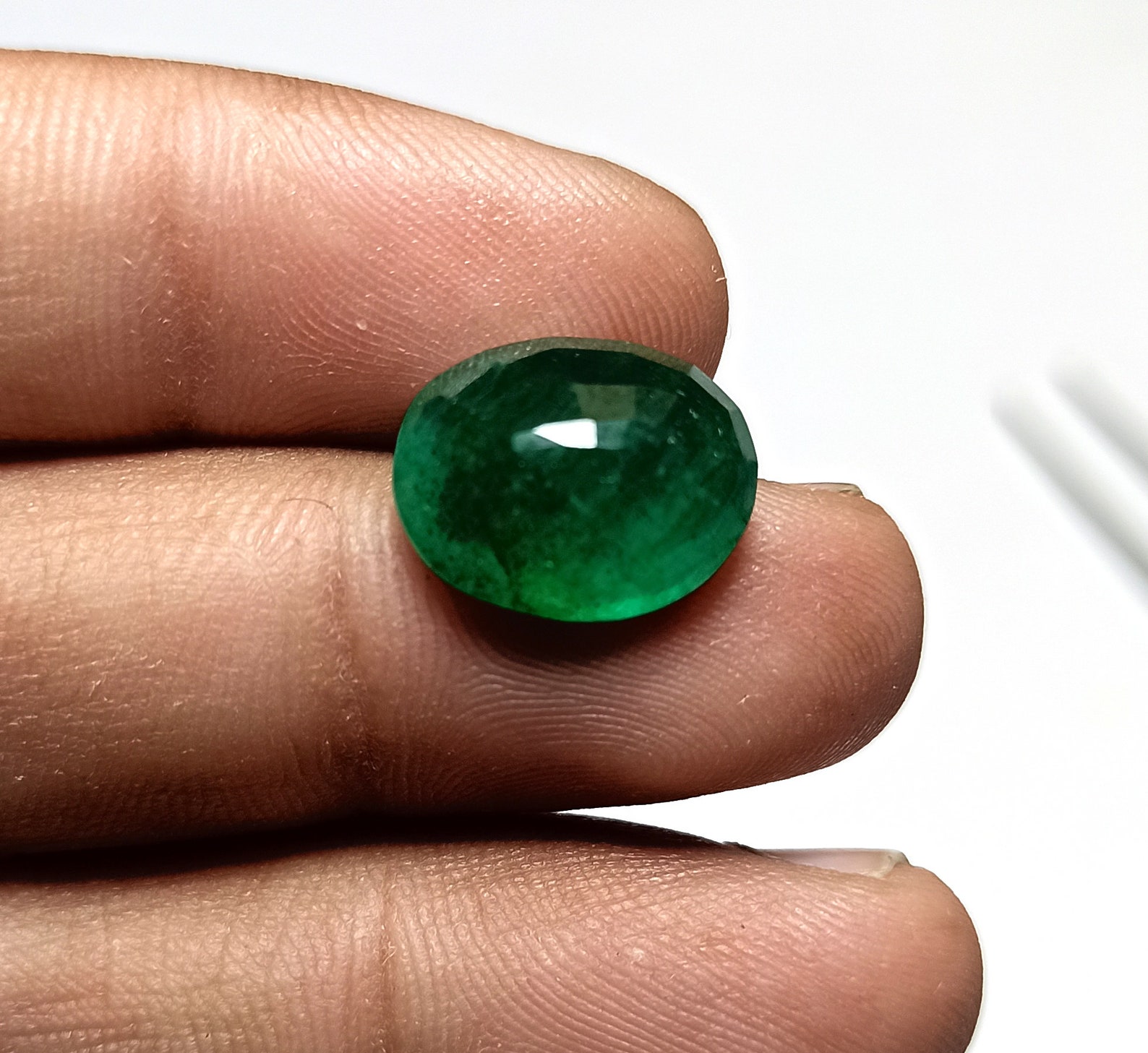

#Green beryl how to#
Read also: How to Identify Common Minerals? Types of Mineral Inclusions with Photos The pink color of morganite is attributed to Mn 2+ ions. It can be routinely heat treated to remove patches of yellow and is occasionally treated by irradiation to improve its color.

Orange/yellow varieties of morganite can also be found, and color banding is common. Morganite, also known as "pink beryl", is a rare light pink to rose-colored gem-quality variety of beryl. Both golden beryl and heliodor are used as gems. The golden yellow color is attributed to Fe 3+ ions. but golden beryl refers to pure yellow or golden yellow shades, while heliodor refers to the greenish-yellow shades. The term "golden beryl" is sometimes synonymous with heliodor. The term Heliodor may also be used to describe light green, orange, and brown Beryl, and can be interchangeable with Golden Beryl. Golden beryl can range in colors from pale yellow to a brilliant gold. The resulting color depends on the content of Ca, Sc, Ti, V, Fe, and Co impurities. However, goshenite can be colored yellow, green, pink, blue and in intermediate colors by irradiating it with high-energy particles. The gem value of goshenite is relatively low. However, there are several elements that can act as inhibitors to color in beryl and so this assumption may not always be true. Since all these color varieties are caused by impurities and pure beryl is colorless, it might be tempting to assume that goshenite is the purest variety of beryl. The name originates from Goshen, Massachusetts, where it was originally discovered.

ScovilĬolorless beryl is called goshenite. Varieties of Beryl: Emerald, Aquamarine, Morganite, Bixbite, and Heliodorl. A trapiche emerald exhibits a "star" pattern it has raylike spokes of dark carbon impurities that give the emerald a six-pointed radial pattern. Learn where they're found and how their characteristic “spoked Trapiche emerald gems are some of the world's rarestĮmeralds.

The deep color of Emerald is caused by traces of the element chromium, but sometimes also vanadium.Įmeralds can be transparent and gemmy, in which case they are extremely valuable, or they can be in opaque or semi-opaque forms which are much more common and not as valuable. The light green form of Beryl is not recognized as Emerald, but rather Green Beryl. The color of Emerald is green to emerald-green. Its intense green color has given it status as an important gemstone throughout the centuries. Red beryl is very rare and has been reported only from a handful of locations: Wah Wah Mountains, Beaver County, Utah Paramount Canyon and Round Mountain, Sierra County, New Mexico, although the latter locality does not often produce gem grade stones and Juab County, Utah.Įmerald is the green variety of Beryl, and its most precious and valuable variety. Of all of the varieties, emerald and aquamarine are the most sought after for their great beauty as gemstones (Beryl). The six different types of beryl include aquamarine, bixbite, emerald, goshenite, heliodor, and morganite. Each type is known because of its distinctive color. Common beryl, mined as beryllium ore, is found in small deposits in many countries, but the main producers are Russia, Brazil, and the United States. Beryl is sometimes found in metasomatic contacts of igneous intrusions with gneiss, schist, or carbonate rocks. In granitic pegmatites, beryl is found in association with quartz, potassium feldspar, albite, muscovite, biotite, and tourmaline. Beryl is often associated with tin and tungsten ore bodies formed as high-temperature hydrothermal veins. It is less common in ordinary granite and is only infrequently found in nepheline syenite. It is found most commonly in granitic pegmatites, but also occurs in mica schists, such as those of the Ural Mountains, and in limestone in Colombia. Beryl is a common mineral, and it is widely distributed in nature. Well-known varieties of beryl include emerald and aquamarine. Beryl is a single mineral with many varieties that are distinguished by their color. BerylBeryl is a mineral composed of beryllium aluminium cyclosilicate with the chemical formula Be₃Al₂Si₆O₁₈.


 0 kommentar(er)
0 kommentar(er)
